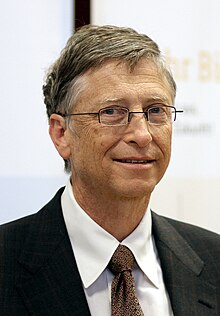| Andy Rubin | |
|---|---|
 |
Andy, as he was called then, began performing and acting at the age of 10. He wrote and starred in skits and plays at the Jewish Community Center. Afterward, he continued acting the leads in plays while attending New Bedford High School. He won a college acting scholarship from the high school in his senior year.
School didn't make a lot of sense to him and as a result he only got into one college that he applied to. Wagner College, a Lutheran School, was located on Staten Island and as a concession to his parents Rubin agreed to go there. By the end of the school year Rubin's parents had received 24 letters from the Dean of Men listing various infractions by their son. His college career came rapidly to a close.
With his heart in acting, he auditioned for the famed American Academy of Dramatic Arts in New York City. The Academy was like an embryo for him: an amazing training ground to eat and breathe acting daily for two years. After graduation he got a job as a page at NBC 30 Rock rising rapidly in the ranks to become the youngest full time writer in the history of the NBC Publicity Department. Going on auditions while at NBC landed him his first big time job. He was cast from hundreds of hopefuls to play the character of Cosmo in a guy/girl duo in a national commercial campaign (6 TV and 5 radio) for Sprite soda.
After being flown to California to shoot for two weeks on location, Rubin decided to move to California to seek work. He met with success almost immediately, guest starring in various television dramatic series including "Ironside", "Streets of San Francisco", "Cannon" and dozens of others. He also scored recurring roles on well known comedies of the day such as "Mary Hartman, Mary Hartman", "The Jeffersons", and "The Odd Couple".
Rubin's big break came when he was tapped by director Martin Ritt ('Hud','Sounder') to star as Walter Matthau's eldest son, Buddy, in the horse-racing picture "Casey's Shadow". Although the film and he got terrific reviews it was not a box office success because it conflicted with another Matthau film, "House Calls" (with Glenda Jackson) which was released the same day.
He followed "Casey's Shadow" with the iconic film, "Police Academy", playing the character of George Martin, the suave Lothario pretending to be Hispanic so he "could get the girls". Rubin then went on to star in three television series, "Jessica Novak" (with Helen Shaver), "Hometown" (TV version of "The Big Chill") and "Joe Bash", an offbeat comedy starring him and Peter Boyle as two lower Manhattan beat cops created and produced by Danny Arnold ("Barney Miller").
Rubin continued to work in TV doing films and mini-series ("Roughnecks", "Deadline: Madrid") and in movies ("Nuts"- playing Barbra Streisand's ex-husband, "Sunnyside", "Little Miss Marker", "Tell Me That You Love Me"). He also was a regular on the Los Angeles theater scene starring in the Company Theater's "James Joyce Memorial Liquid Theater", Sam Shepard's "The Unseen Hand" at the Odyssey, "Hopscotch" at LAAT and "The Passing Game", produced by Tom Hanks, at the Gene Dynarski.
It was about this time that Rubin went on what he calls a "walkabout" traveling the world. During that time he explored the pyramids of Egypt, the temples of India and the outback of Australia where he and his wife, Lauren, lived with an Aboriginal tribe in a remote region of the country. He would also return to work occasionally, playing Jules Bergman, ABC's Science correspondent in "From the Earth to the Moon", and also writing and starring in "Men and Their Fathers", a well received short film.
He recently completed filming for a documentary, "The CURE Is U", set for release in 2012. No longer on a 'walkabout', he lives with his wife, Dr. Lauren Rubin, two dogs and five cats in Pacific Palisades. His passion for and love of acting has never dimmed
